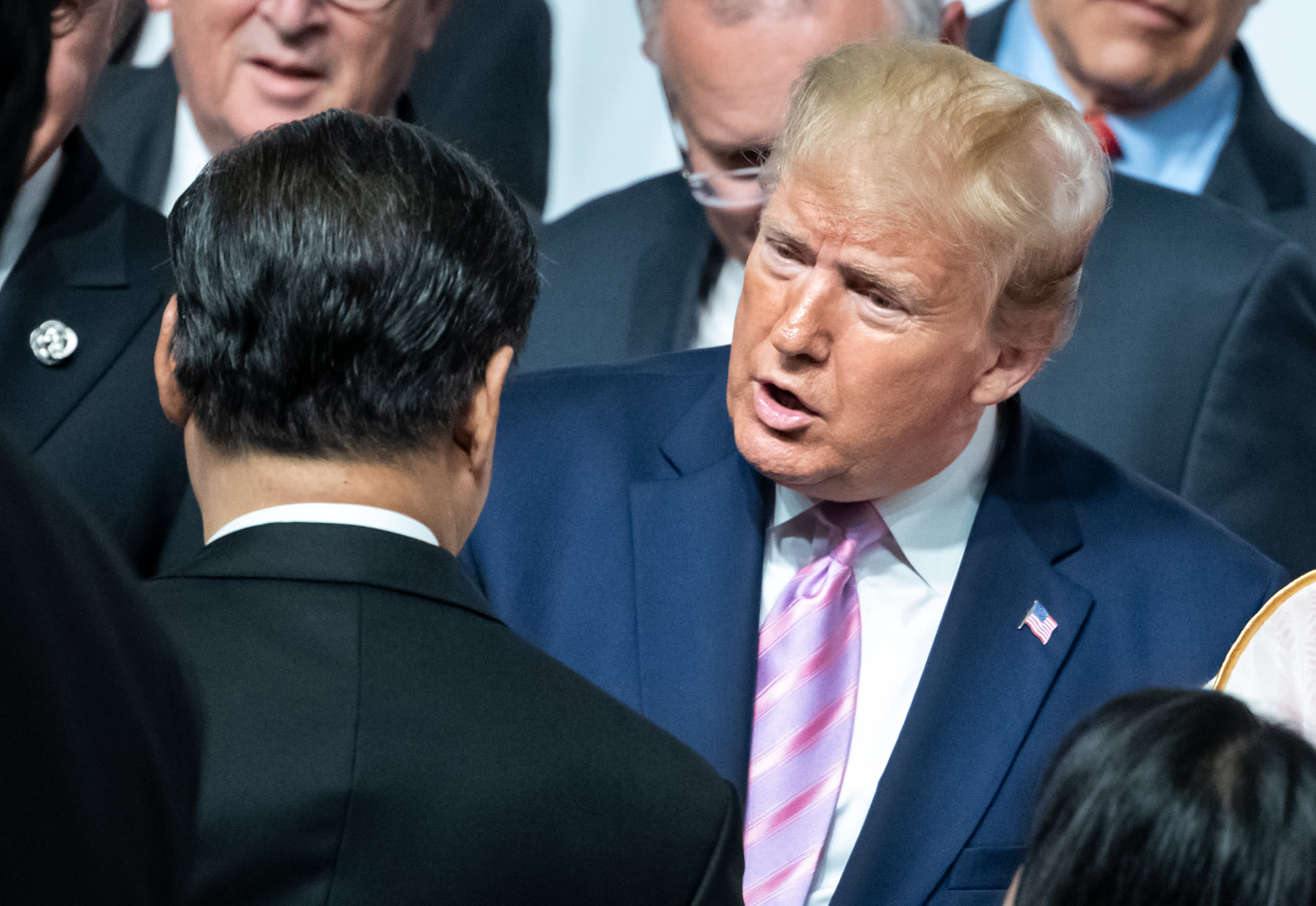The latest escalation in the trade war between the U.S. and China increases odds the U.S. economy will fall into recession— and that the Federal Reserve will try to stop it with more aggressive interest rate cuts.
President Donald Trump called on U.S. companies Friday to find alternatives to China, following a new round of Chinese tariffs on $75 billion in U.S. goods, including automobiles.
Trump fired off an angry tweetstorm against China, shortly after he once more criticized Fed Chairman Jerome Powell, who gave a measured speech at the Fed’s annual Jackson Hole symposium Friday morning. Powell left the door open for more rate cuts but did not go so far as to promise any — clearly disappointing the president, as well as some market pros who wanted to hear a more dovish Fed.
Trump, in a pair of tweets, criticized Powell for a lack of action, and asked who is a bigger enemy, the Fed chairman or the president of China?
Trump then went on to tweet that the U.S. does not need China, China has been stealing from America, and that U.S. companies are “ordered” to look for alternatives. Treasury yields slid and stocks sold off, with companies doing business in China among the hardest hit.
“Chinese retaliation clearly shows they are making no progress on negotiations for a deal, and the president just upped the ante again. They are firing at each other without any restraint at this point. Recession odds are a lot higher. He’s about to push the economy off the rails. It’s very close,” said Mark Zandi, chief economist at Moody’s Analytics.
As the Dow lost 2% Friday afternoon, the 2-year to 10-year curve flattened and briefly inverted. An inverted yield curve, where investors look for more yield on shorter term securities, has been a fairly reliable recession warning.
“These are risk-off moments that we think do mean more tightening in financial conditions and increases in spikes and volatility, that tend to be unhelpful for the outlook,” said Michael Gapen, chief U.S. economist at Barclays. “It raises the amount of insurance the Fed needs to put into place to support the economy.”
Gapen said Powell indicated he could do more easing when he spoke Friday, and that there were more risks since the Fed met in July, including the protests in Hong Kong and risks around Italian politics. But the overriding concern he mentioned was trade uncertainties.
“I think the Fed was prepared to ease in September. This locks that in. I suppose if things deteriorate enough, we start asking do they do 50 basis points instead of 25,” said Gapen.
Art Hogan, chief market strategist at National Securities, said the tensions are now at a heightened level, creating an even more uncertain level for markets. “It’s almost like the administration was expecting the Fed to announce a rate cut at the Jackson Hole meeting. And since Powell did not deliver, he went to def-com 5, ” said Hogan.
Historically, the Fed does not act at its annual Jackson Hole retreat.
Gapen said the trade war is hurting global trade revenues. For the U.S., exports make up about 15% of GDP, but for other countries, the contribution is about twice as much. Trade issues are hitting economies globally, and Germany, for instance, has seen a modest contraction in growth while the U.S. is still growing at about 2%.
“The risk is it gives you the illusion the U.S. economy will do fine,” said Gapen, adding that there’ s a question of how long the U.S. can avoid also seeing a downturn.
Citigroup global economist Cesar Rojas said it’s possible Trump’s tweet threats could be a precursor to a much more intense phase of the trade wars, which would be even more damaging to both economies.
“To me that sounds like he will eventually announce that tariffs on China will be increased and companies will perhaps have six months, or a year, before these tariffs go up to these levels, or even that trade with China is blocked,” said Rojas.
Economists said the Chinese tariffs and Trump’s comments on Twitter raise the level of uncertainty for U.S.businesses, which already have curbed spending.
“I think businesses are already on the edge,” Zandi said. “If the president pushes this, they’ll go over the edge. It will be too much to bear. They are right now sitting on their hands. But if the president goes much further, they’re going to start cutting, and laying off workers. That’s recession. Manufacturers are already in recession.”
On Thursday, the IHS Markit Purchasing Managers Index showed that the U.S. manufacturing sector was in contraction in July, for the first time since the financial crisis. A weakening in services PMI showed that the manufacturing downturn may be spreading, but service PMI remained above 50, which means expansion..
Zandi said Moody’s Analytics has an indicator for daily recession odds based on financial inputs, like credit spreads, stock volatility. The indicator shows a 45% chance of recession in the next 12 months. That includes yield curve metrics so it rose, as the curve inverted this week.
“What we’re seeing right now is it’s going to hurt both economies,” said Rojas. “Basically, the extent of where we are in the U.S. economy is that external factors are already weighing on manufacturing and agriculture,” said Rojas. He said the manufacturing PMI confirmed that the U.S. will become more sensitive to tariffs and trade wars.
